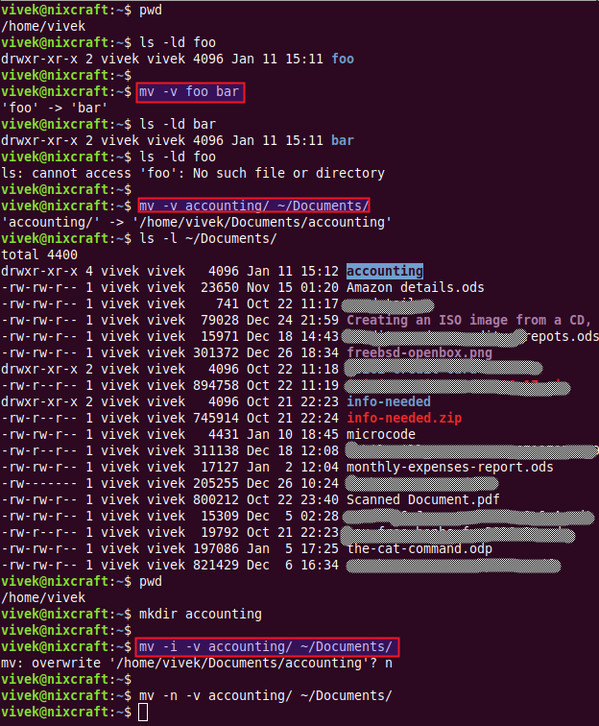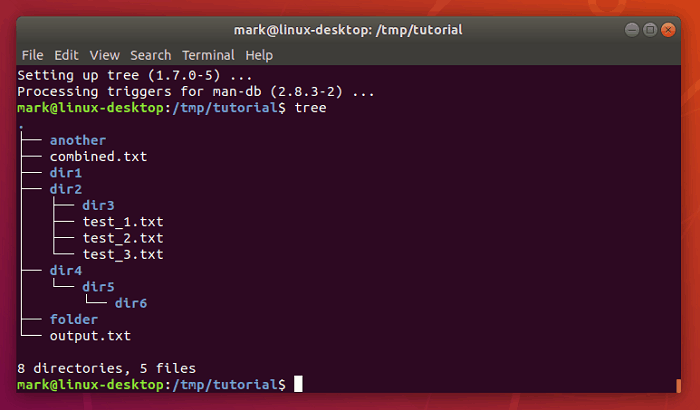

Yes, you can rename a directory and all its contents at once by using the mv command with the “-r” or “-R” option. Renaming files is something that occurs frequently, and in Linux on terminal, there are many ways to rename files. Question 5: Is it possible to rename a directory and all its contents at once? If you’re not the directory owner, you may need to use the “sudo” command or contact the owner to change the permissions. If you receive a permission error while trying to rename a directory, ensure you have the appropriate permissions to modify the directory. Question 4: What should I do if I receive a permission error while trying to rename a directory? It’s best to rename a directory when it’s not being used or during a maintenance window. It replaces only the first occurrence of some text in a filename. No, it is not recommended to rename a directory while it’s in use because it can cause errors and issues while the files in the directory are being accessed. The rename command is from the util-linux package. For example, if you want to rename a directory named ‘oldname’ to ‘newname’, you would type: mv oldname newname Question 3: Can I rename a directory while it’s in use? Then, use the mv command followed by the current name of the directory and the new name you want to give it.
#Rename linux install
You can install it on your favorite Linux distro using your systems default package manager. Place the rename command after the exec subcommand. and use the -exec subcommand of find to operate on those files or directories. You can apply robust pattern matching techniques in order to rename multiple files at once. Then to act on all files and files in subfolders, you can use the find command to find all files or directories in a certain path. Question 2: How do I rename a directory in Linux?įirst, navigate to the parent directory you want to rename. The rename utility is a Perl-based program that makes batch renaming simple through its advanced use of regular expressions. This command can be used to move files and directories as well. The command to rename a directory in Linux is “mv” which stands for move.
#Rename linux how to
FAQ on How to Rename a Directory In Linux Question 1: What is the command to rename a directory in Linux? Note that if the new directory name already exists, the contents of the old directory will be moved into the existing directory.įor example, if you want to rename a directory called “old_name” to “new_name”, you can type the following command:Īfter pressing Enter, the “old_name” directory will be renamed to “new_name”. The mv command will rename the directory to the new name you specified. How to Install the rename Command On many Linux distributions, the rename command is not available by default. It offers more features than the mv command but can be more challenging to use since it requires basic knowledge of Perl expressions. Replace “old_name” with the current name of the directory and “new_name” with the new name you want to give to the directory. The rename command is used to rename multiple files or directories in Linux.


Once you’re inside the directory you want to rename, type the following command: mv old_name new_name.For example, if you want to rename a directory called “old_name” located in the home directory, you can type cd ~ to go to your home directory and then cd old_name enter the directory. Navigate to the directory containing the directory you want to rename using the cd command.Question 5: Is it possible to rename a directory and all its contents at once?.Question 4: What should I do if I receive a permission error while trying to rename a directory?.Question 3: Can I rename a directory while it’s in use?.Question 2: How do I rename a directory in Linux?.Question 1: What is the command to rename a directory in Linux?.FAQ on How to Rename a Directory In Linux.rename y/A-Z/a-z/ Rename files such that all uppercase letters are changed to their lowercase equivalents. For instance, this command would rename the file 'project.bak' to 'project'. Rename all files matching '.bak' to strip the file name of its extension. The sort -r is required to ensure that files come after their respective directories, since longer paths come after shorter ones with the same prefix. rename then reads its file list from standard input. In the following example, if the dir2 directory exists, the command will move dir1 inside dir2. I haven't found a convenient analogue for -execdir with xargs: Xargs: change working directory to file path before executing? To rename a file you need to specify the destination file name: mv file1 file2 The syntax for moving directories is the same as when moving files. depth -execdir rename 's/_dbg.txt$/_.txt' ''
:max_bytes(150000):strip_icc()/C7sP05Ee6I-35352bcb2abd426dbd2ca0cf5ea9f5cc.png)
Works directly only for suffixes, but this will work for arbitrary regex replacements on basenames: PATH=/usr/bin find.


 0 kommentar(er)
0 kommentar(er)
